Archive
Werner Wolff
- Werner
- Wolff
- 11-06-1911
- Mannheim (DE)
- 2002
- New York City (US)
- Photographer
Werner Wolff was forced to leave Germany in 1936 due to his Jewish background and emigrated via Hamburg to New York, where he could follow his career as photographer and photojournalist.
Word Count: 30
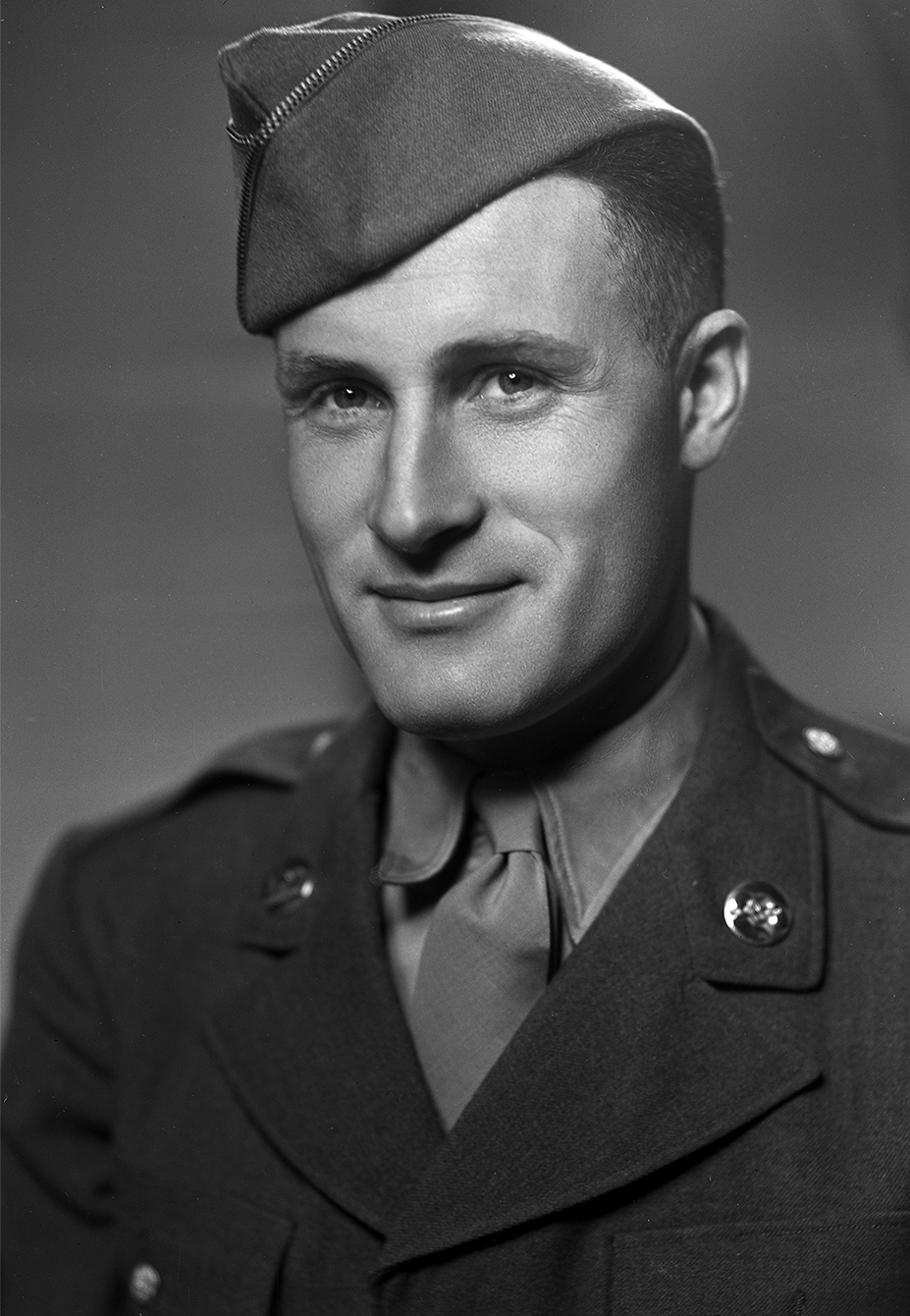
Lotte Jacobi, Werner Wolff, 1943, New York (© 2021. University of New Hampshire). 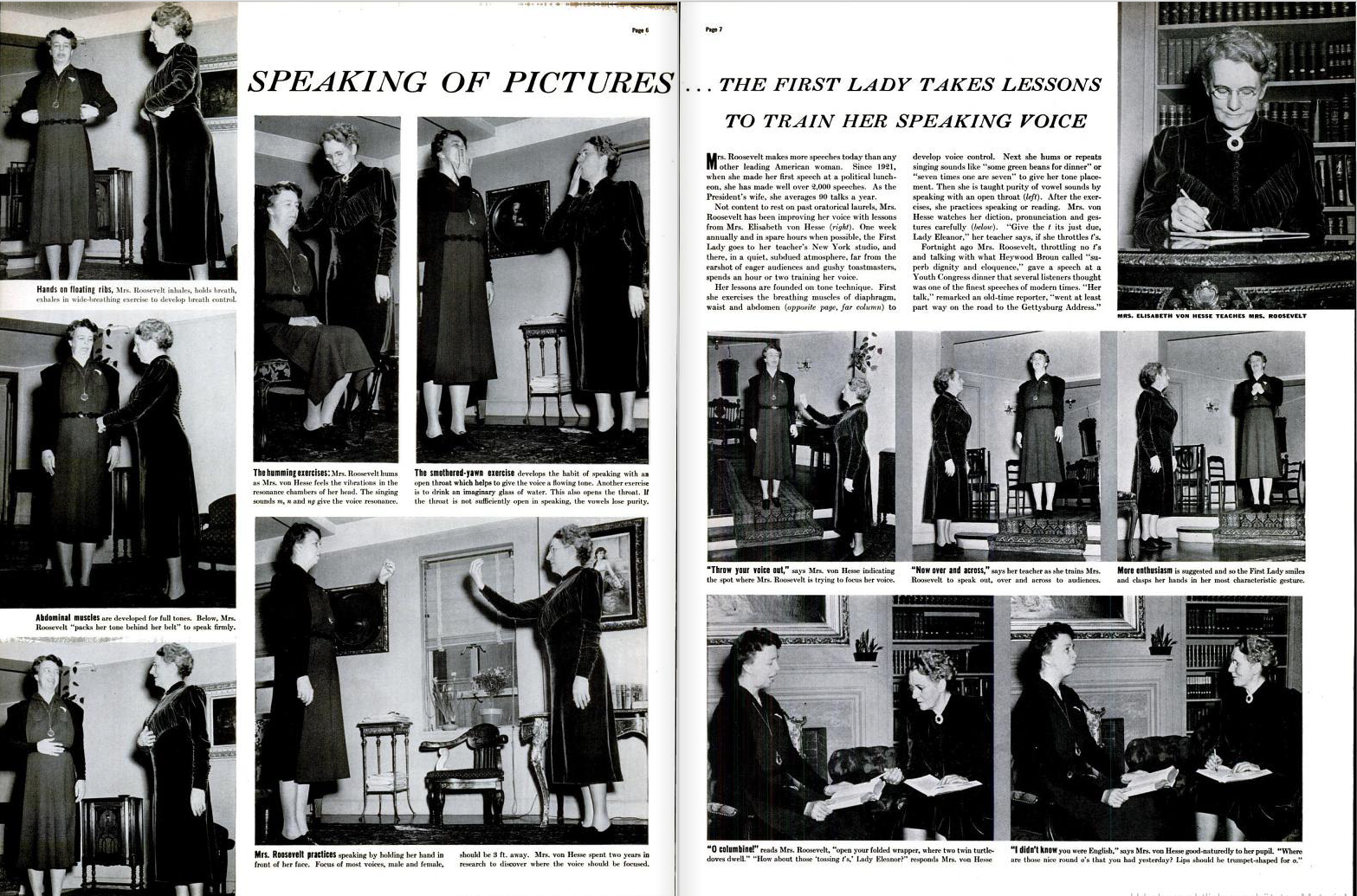
“Speaking of Pictures. Mrs. Roosevelt Takes Voice Lessons.” Life, 13 March 1939, pp. 6–9 (Photo: Helene Roth). 
Agreement between Black Star and Werner Wolff, 1947 (The Family of Werner Wolff © Ryerson Image Center). 
Camera Features stamp (The Family of Werner Wolff © Ryerson Image Center). 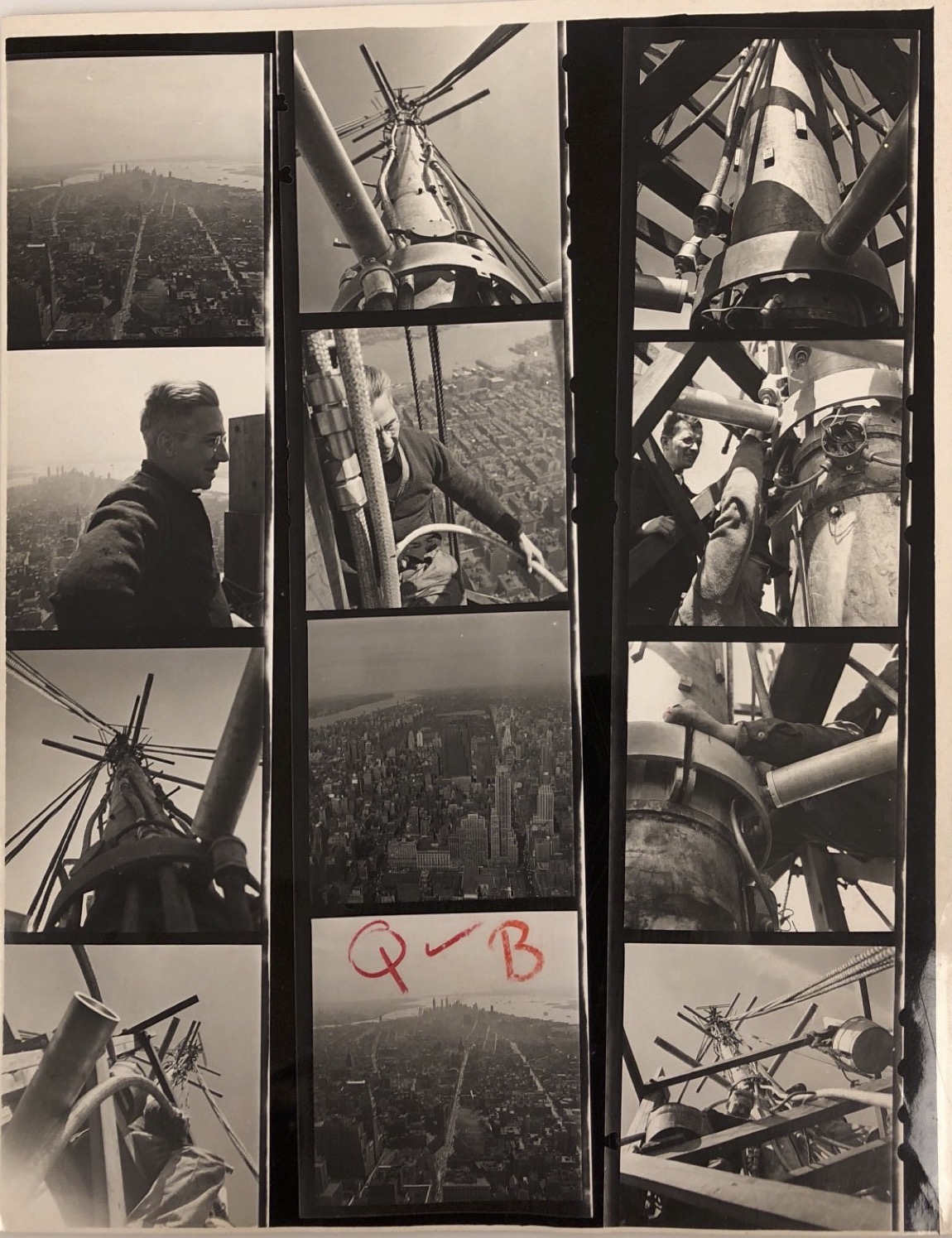
Contact sheets for reportage on Empire State Building by Werner Wolff, 1946 (The Family of Werner Wolff © Ryerson Image Center). 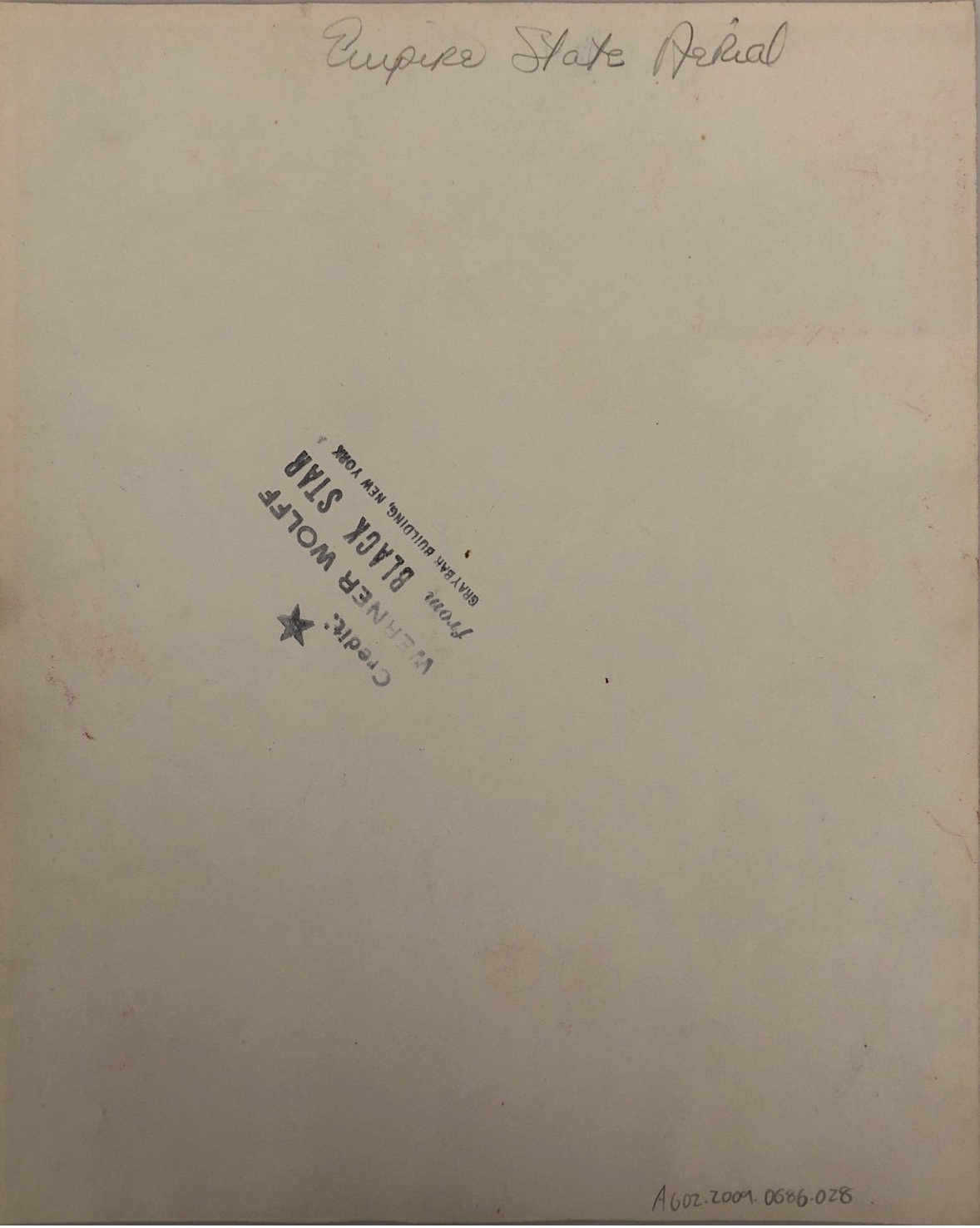
Rear side of contact sheets for reportage on Empire State Building by Werner Wolff, 1946 (The Family of Werner Wolff © Ryerson Image Center). 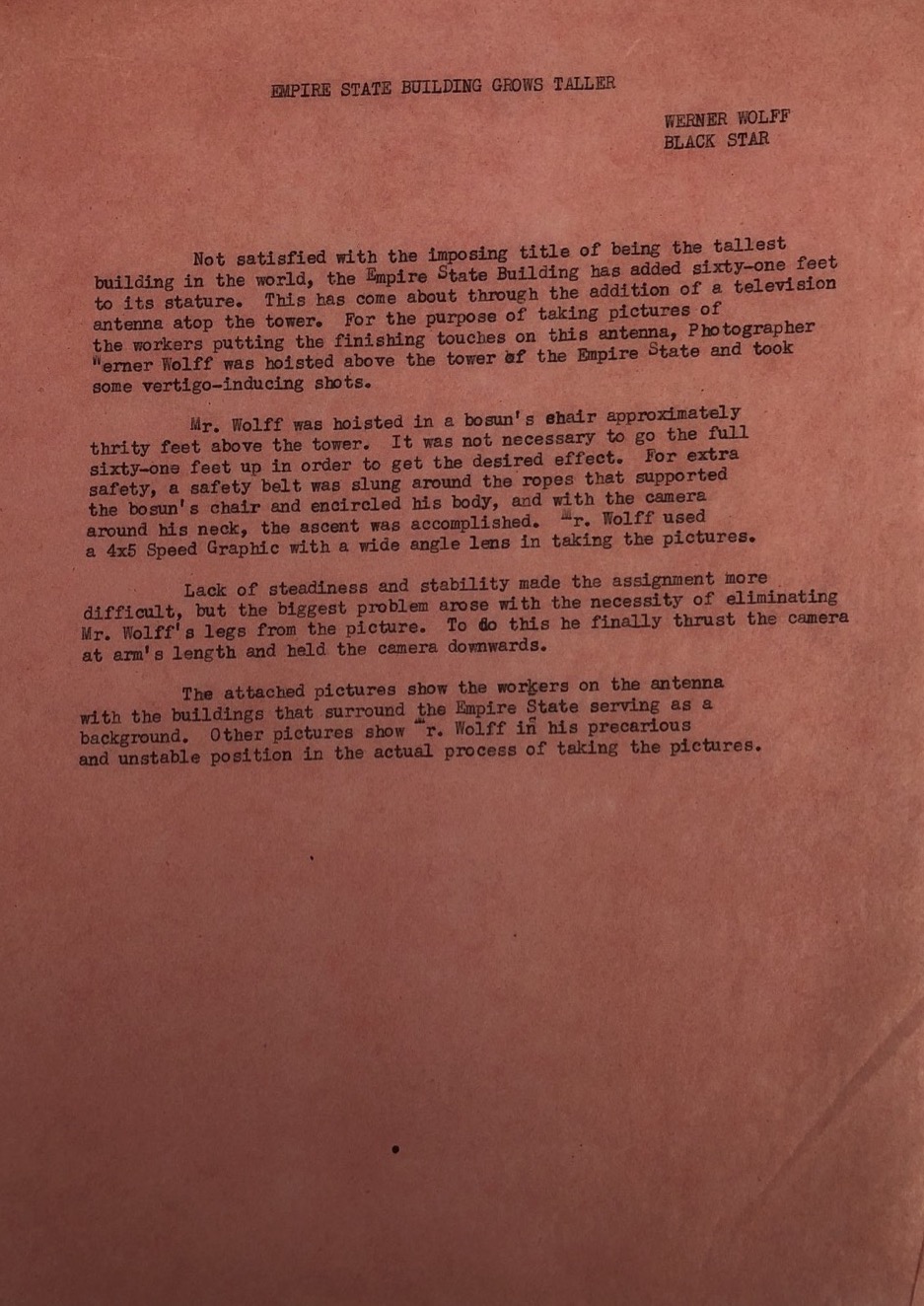
Text for reportage on Empire State Building, written by Werner Wolff, 1946 (The Family of Werner Wolff © Ryerson Image Center). 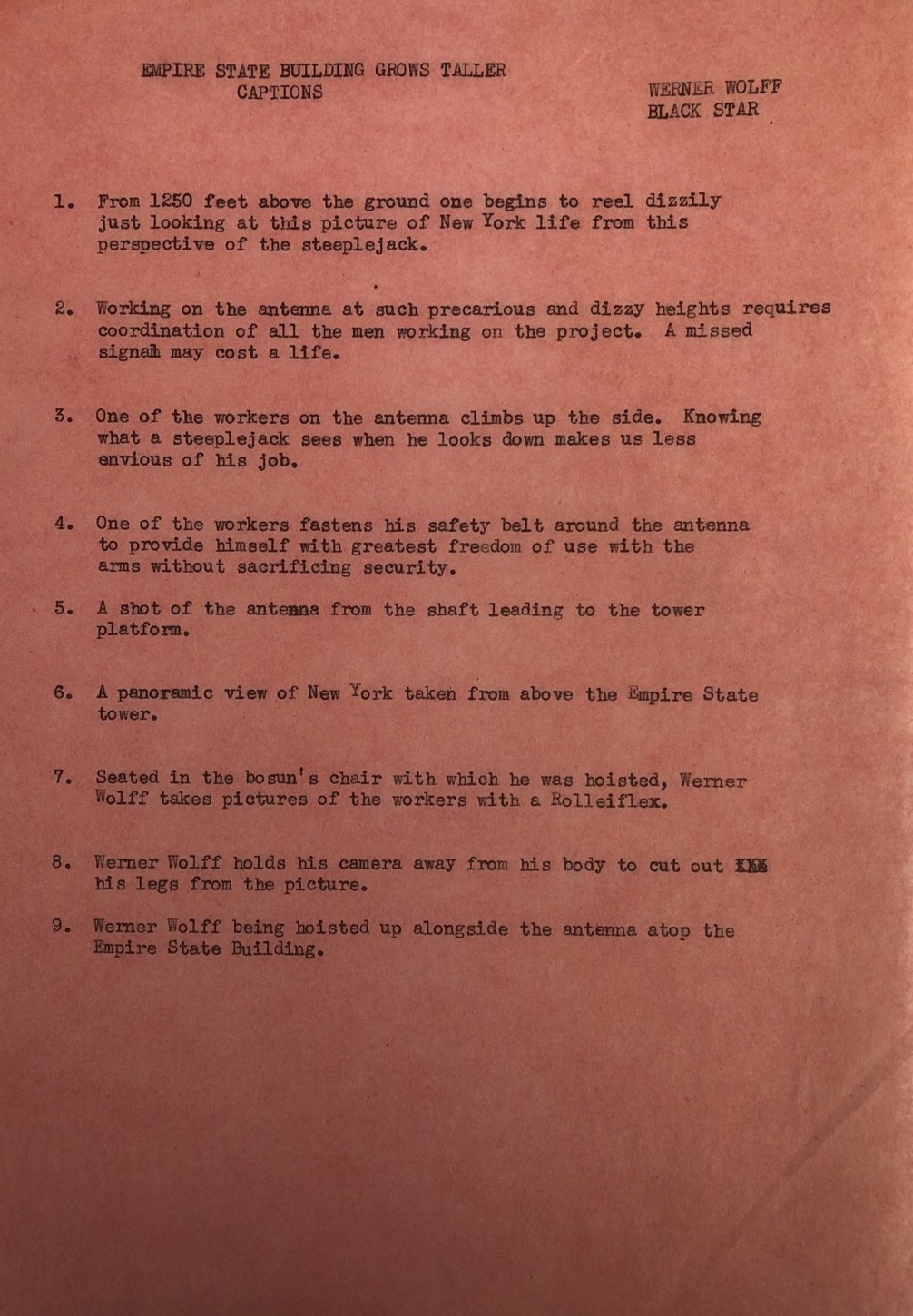
List of images and description for reportage on Empire State Building, written by Werner Wolff, 1946 (The Family of Werner Wolff © Ryerson Image Center). 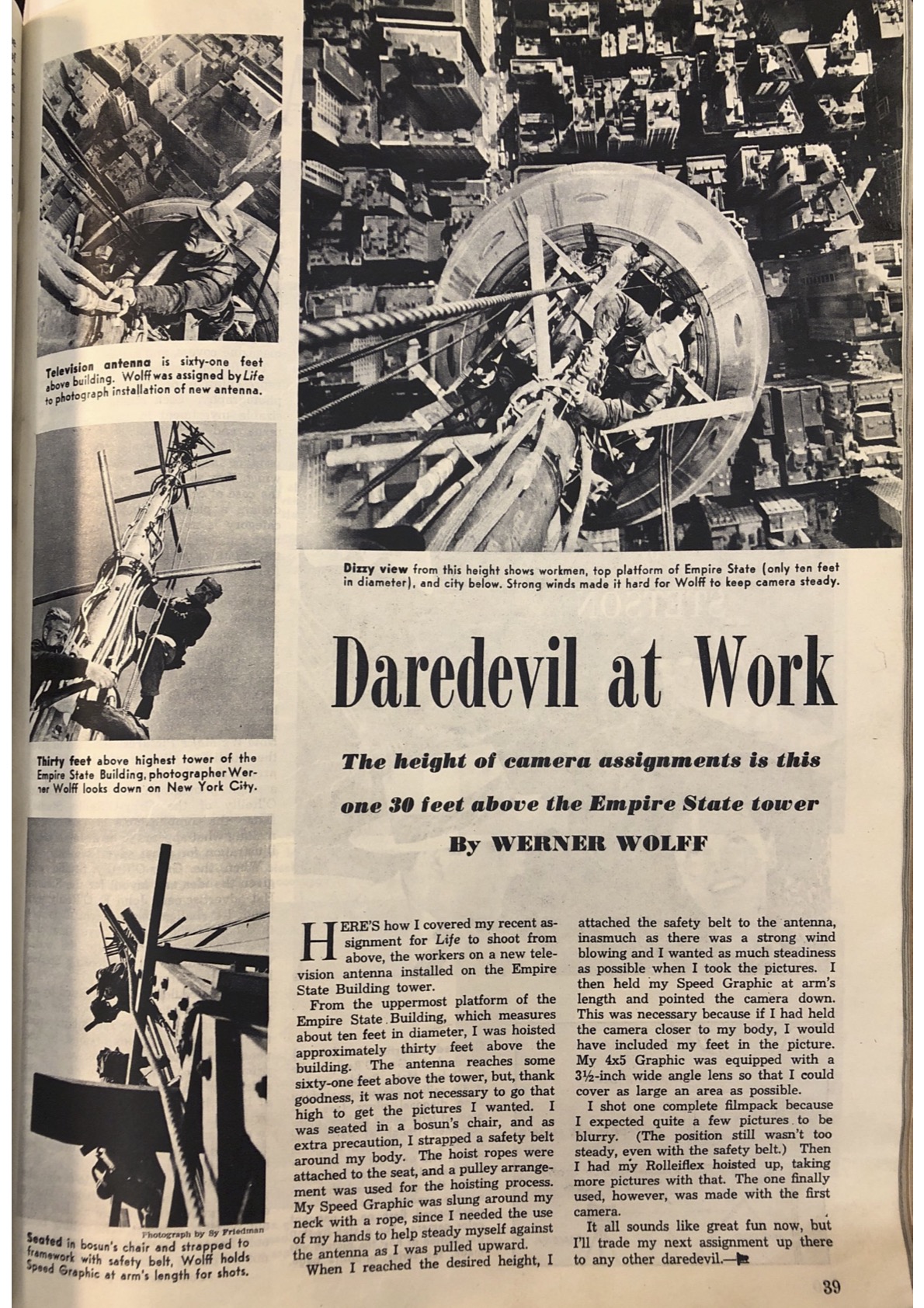
“Daredevil at Work” reportage by Werner Wolff in Popular Photography, September 1946, p. 39 (Photo: Helene Roth). 
Werner Wolff, K.S. Safranski’s Class in Pictorial Journalism, 1950 (New School for Research Archive, Photograph Collection © Steven Wolff). Chapnick, Ben. Truth Needs No Ally. Inside Photojournalism. University of Missouri Press, 1994.
Goldsmith, Arthur. The photography Game. What is and how to play it. Viking Press, 1971.
Schaber, Irme. “Fotografie.” Handbuch der deutschsprachigen Emigration 1933–1945, edited by Claus-Dieter Krohn and Patrick von zur Mühlen, WBG, 1998, pp. 970–983.
Word Count: 90
My deepest thanks go to Steven Wolff for providing me with information on his father Werner Wolff as well as his permission to use the images.
Word Count: 26
New York City, US (1936-1944); New York City, US (1945-2002).
397 Bleecker Street, Greenwich Village, New York City (residence, 1946–2002); 420 Lexington Avenue, Black Star Photo Agency, Midtown Manhattan, New York (workplace, 1943–2002).
- New York
- Helene Roth. "Werner Wolff." METROMOD Archive, 2021, https://archive.metromod.net/viewer.p/69/2948/object/5138-7740541, last modified: 03-05-2022.
-
Kurt SafranskiPicture AgentFounding MemberTeacherCartoonistPublisherIllustratorNew York
Kurt Safranski was one of the founding members of the Black Star photo agency, a teacher at the New School for Social Research and the author of photojournalistic articles and books.
Word Count: 31
Andreas FeiningerPhotographerWriterEditorNew YorkAndreas Feininger, was a German émigré photographer who arrived in New York with his wife Wysse Feininger in 1939. He started a lifelong career exploring the city's streets, working as a photojournalist and writing a large number of photography manuals.
Word Count: 39
Ruth BernhardPhotographerNew YorkRuth Bernhard was a German émigré photographer who lived in New York from the 1920s to the 1940s. Beside her series on female nudes, her place in the photography network, as well as in the New York queer scene, is unknown and understudied.
Word Count: 43
Erika StonePhotographerNew YorkErika Stone is a German émigré, who moved to New York with her parents and sister in December 1936, at the age of 12. She went on to carve out a career as photographer.
Word Count: 32
Lisette ModelPhotographerNew YorkLisette Model was an Austrian-born photographer who lived in New York with her husband Evsa Model after emigrating from France. Her street photographs capturing the curiosities of everyday life quickly caught the interest of museums and magazines.
Word Count: 37
Fred SteinPhotographerLawyerNew YorkAlways accompanied by his camera, the German émigré photographer Fred Stein discovered New York City during the 1940s and 1950s. His pictures provide an human and multifaceted view of the metropolis.
Word Count: 31
Charles LeirensPhotographerMusicianMusicologistNew YorkCharles Leirens was a Belgian-born musician and photographer who emigrated to New York in 1941. While publishing two books on Belgian music, he also gave courses in musicology and photography at the New School for Social Research.
Word Count: 36
Rolf TietgensPhotographerEditorWriterNew YorkRolf Tietgens was a German émigré photographer who arrived in New York in 1938. Although, in the course of his photographic career, his artistic and surrealist images were published and shown at exhibitions, his work, today, is very little known.
Word Count: 39
Lotte JacobiPhotographerNew YorkIn October 1935 the German émigré photographer Lotte Jacobi, together with her sister Ruth Jacobi, opened a photo studio on 57th Street. The two sisters had to leave their parents' photo studio in Berlin in the 1930s and emigrated to New York.
Word Count: 41
Tim GidalPhotographerPublisherArt HistorianNew YorkTim Gidal was a German-Jewish photographer, publisher and art historian emigrating in 1948 emigrated to New York. Besides his teaching career, he worked as a photojournalist and, along with his wife Sonia Gidal, published youth books.
Word Count: 35
Ruth JacobiPhotographerNew YorkRuth Jacobi was a German-speaking, Polish-born photographer who emigrated in 1935 to New York, where she opened a studio together with her sister Lotte Jacobi. She later had her own portrait studio.
Word Count: 31
Fritz HenlePhotographerNew YorkFritz Henle was a German Jewish photographer who emigrated in 1936 to New York, where he worked as a photojournalist for various magazines. He also published several photobooks of his travels throughout North America and Asia.
Word Count: 35
Kurt KornfeldPublisherPicture AgentFounding MemberNew YorkKurt Kornfeld was a publisher and literary agent and a founding member of the Black Star photo agency in New York City after his emigration in 1936 to New York.
Word Count: 29
Ernest MayerPicture AgentFounding MemberPublisherNew YorkErnest Mayer was co-founder of the Black Star Publishing Company photo agency, which built a network for émigré photographers and the American magazine scene from the mid-1930s until the end of the 1950s.
Word Count: 34
Trude FleischmannPhotographerNew YorkTrude Fleischmann was an Austrian-Jewish portrait and dance photographer who emigrated in 1939 to New York, where she opened a studio in Midtown Manhattan with the photographer Frank Elmer.
Word Count: 28
Black Star AgencyPhoto AgencyNew YorkThe German émigrés Kurt S(z)afranski, Ern(e)st Mayer and Kurt Kornfeld founded Black Star in 1936. The photo agency established was a well-run networking institution in New York.
Word Count: 31
PIX Publishing Inc.Photo AgencyNew YorkPIX Publishing Inc. was a photo agency founded in New York in 1935 by photo agent Leon Daniel and Celia Kutschuk, together with German émigré photographers Alfred Eisenstaedt and George Karger.
Word Count: 30
New School for Social ResearchAcademy/Art SchoolPhoto SchoolUniversity / Higher Education Institute / Research InstituteNew YorkDuring the 1940s and 1950s emigrated graphic designers and photographers, along with artists and intellectuals, were given the opportunity to held lectures and workshops at the New School for Social Research.
Word Count: 31
Camera FeaturesPhoto AgencyNew YorkCamera Features was a photo agency founded by the photographer Werner Wolff and other colleagues of the photo agency PIX.
Word Count: 20
SpiratonePhoto SupplierNew YorkSpiratone was a photo company and photo supplier founded in 1941 by the Austrian émigré family Hans (1888–1944) and Paula Spira (?–?) and their son Fred Spira (1924–2007).
Word Count: 24